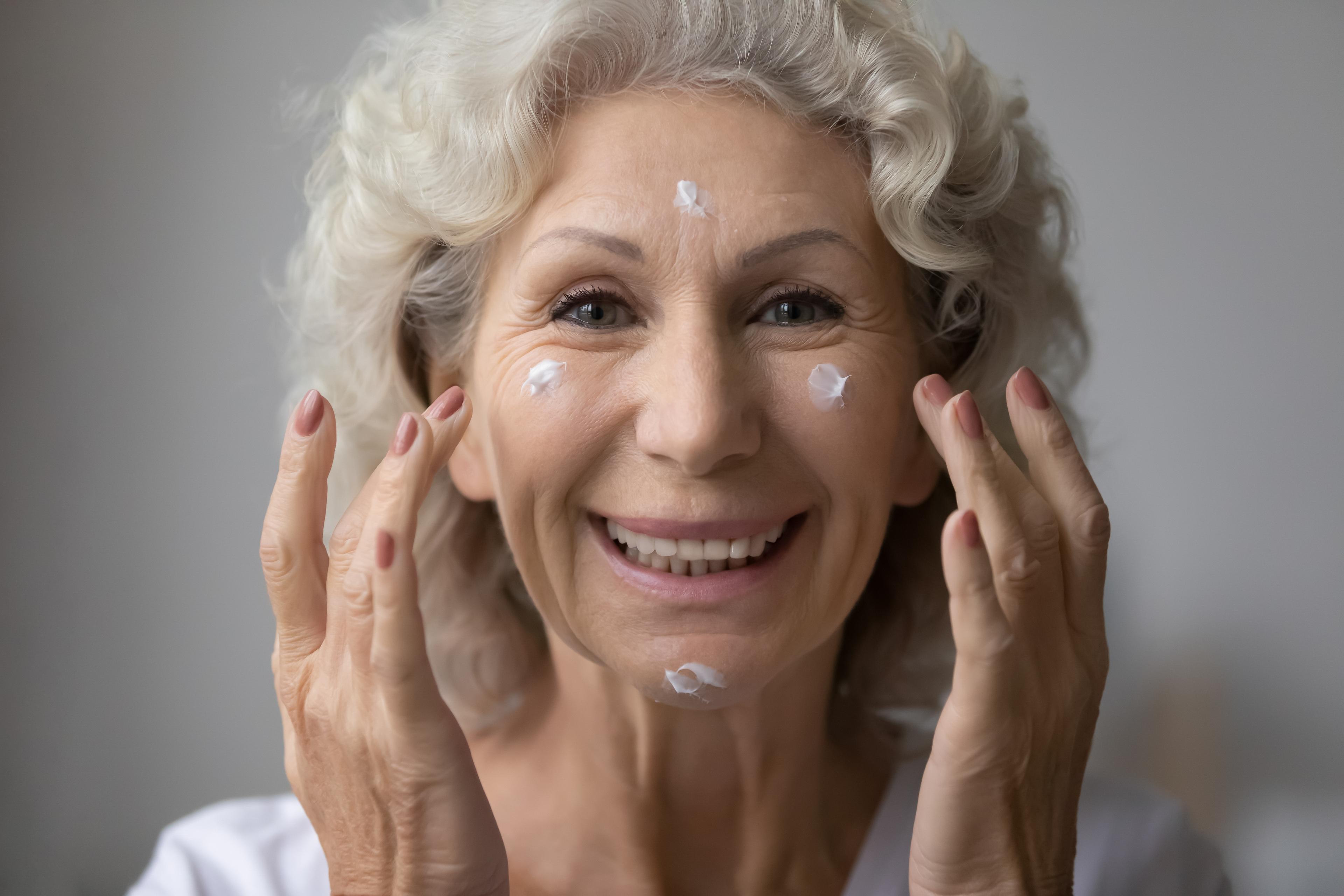Gah. Skincare. All the products! Do I put on the retinol before the moisturiser, the toner before the serum, Vitamin C after cleansing? It's so confusing! We needed help, so we called in Dr Emmaline Ashley to tell us, very simply, what we should be doing and when!
Morning and Evening Skin Care Routine: WHAT DO I DO?
What skincare products should I be using in the morning and in the evening? Or should they be the same? This is a question I’m often asked. So, in this article I’ll cover the ideal AM and PM skincare routine - including information on ingredients, consistencies and order in which skincare products they should be applied. Here’s what we can all be doing to improve our at-home skincare regimens.
To receive the best advise about your skin and the best skincare routine for you, find and book in with a practitioner on Glowday
Building your skincare routine
Everyone’s skin is different, so if you are changing things up, always introduce new products slowly and one-at-a-time so you know that they are truly making a difference. It’s important to consider that it may take up to three months to see the benefits of a product on your skin, though, so don’t be disheartened if a product doesn’t appear to be working straight away. The general framework that I recommend for building a skincare routine involves beginning with the basics of a cleanser, moisturiser, and good SPF. You might find this guide useful in tweaking your routine if your skin suddenly feels drier and more sensitive this fall.
AM skincare: The morning routine
Ok, let’s start by looking at the skincare we should be using in the morning. Here’s what I suggest...
1. Cleanser
Cleansing is an essential step to removing any excess dirt, oil, or pollutants to your skin and giving a clean surface for the rest of your skincare ingredients. However, when it gets colder in the Autumn, often leading to dry skin, you might want to switch your cleanser out for something that is a bit gentler.
We don’t want to overdo it and strip the skin of the natural, protective lipid layer. Generally, I find that the tweak you need to do to your routine depends on your skin type.
If you have dry, sensitive skin then foaming cleansers or cleansers with anti-acne ingredients like salicylic acid may be too harsh, so consider a creamy or more hydrating cleanser. I love the Milky Lotion Cleanser from Epionce for this purpose. In some people, I even suggest that for your morning cleanse it is fine to just clean with water. If you think about it, in those who don’t tend to accumulate much excess oil overnight (and as long as you are sleeping on a clean pillowcase or your partner isn’t chain smoking in the bed beside you), you would not be expecting your skin to accumulate much dirt or pollutants overnight.
However, if you love your salicylic acid and feel you have more acne-prone skin and don’t want to give it up during the colder months, it is also perfectly acceptable to have a different cleanser for the morning (a more targeted one for your primary skin concerns), and a gentle cleanser at the end of the day.
2. Exfoliants
Chemical exfoliants can be excellent in preventing your skin cells from adhering too closely together and allowing the outer, dead layer of skin to turnover more easily while new and healthy skin takes its place. However, as the weather turns colder, we don’t always want exfoliants that are too harsh. While this doesn’t mean that you need to abandon exfoliation, you might want to consider some alternatives to the more commonly used glycolic or salicylic acid.
I like recommending lactobionic acid as a gentle alternative exfoliant to improve the appearance of dullness or hyperpigmentation in the skin.
3. Actives/Serums
A good serum can be excellent in working with your SPF to protect your skin from the environmental stressors it is likely to encounter throughout the day, particularly in terms of containing good antioxidants. Serums also can contain anti-ageing ingredients. A great example of this is vitamin C, also known as L-ascorbic acid. It is vitally important in the production of collagen and as an antioxidant, so it’s definitely a skincare ingredient that I always love to recommend. I love something like Epionce’s Intense Defense Serum, which is anti-ageing and contains vitamins A, B, C, D, and E all in one product.
4. Moisturisers
If you do suffer with dryer or more sensitive skin when the temperature begins to change, a thicker and creamier moisturiser might be beneficial. I have some favourite ingredients in moisturisers – again tailoring it to skin type. A really gorgeous hyaluronic acid is probably familiar as a superstar hydrating ingredient to most, but there are some other really stellar ingredients out there.
In extremely dry and sensitive skin, you cannot beat a good ceramide. Ceramides are a type of lipid, similar to the fatty membranes you find in your body’s cells, are abundant in the top layer of your epidermis, keeping it watertight. Without enough ceramide in your skin, your ability to retain moisture is compromised.
Niacinamide (a form of Vitamin B3) is also a great ingredient to boost the production of ceramides in your skin. It has the added benefit of regulating oil production as well as reducing dehydration, so can be excellent for those with oiler skin types.
In addition to this, in more oily skin try to find medical grade skincare moisturisers that are non-comedogenic. A skincare specialist can help point you towards creams that truly fit this criteria (many brands often claim they are without doing the testing as this is not a regulated term).
Lip moisturisers and eye creams might be something that you skip during the summer, but that you need as the weather turns. The skin around your eyes is very delicate, and that added layer of protection and hydration can be extremely beneficial.
5. SPF!
Keep using your sunscreen! It may be tempting as the temperatures drop and the sun doesn’t feel quite as strong to ditch the SPF, but I cannot stress enough how important it is to continue to protect your skin. UVB peaks in the summer and midday and is the hot sunshine that we associate with burning. But most of the UV radiation our skin receives is UVA radiation – radiation that tends to be more consistent throughout the day and year, and at a longer wavelength it can penetrate through cloud cover, window glass and more deeply into the layers of your skin. As always you need at least SPF 30+ and broad-spectrum coverage.
Whether you prefer a physical sunscreen or chemical (organic) one, find one that works for your skin type and that you are comfortable wearing every day – and stick with it!
PM Skincare: The Evening Routine
Ok, so that’s the AM skincare routine covered. Now let’s take a look at what you should be doing at night...
1. Cleanser
Definitely don’t skip your cleanser at the end of the day! Even if you don’t wear makeup, your skin will have borne the brunt of plenty of environmental pollutants, oil and dirt but the time your day is over. Again, you want that clean slate for all of your medical-grade skincare products to penetrate the skin properly and work their magic.
Again, it is perfectly fine to use a different cleanser in your morning and evening routines. Your evening routine might even require a double-cleanse if you wear a lot of makeup or if your skin is more oily.
2. Serums/actives
Again, it’s up to you if you want to add extra serums or active ingredients to your night routine. Another really lovely ingredient I like to suggest for night-time routines is resveratrol, which is an antioxidant that can be found in grape skin and dark chocolate. It can help deal with the damage caused by the sun during the day and trigger our fibroblasts to generate more collagen as we sleep at night.
3. Moisturisers
Similar to the AM routine, don’t neglect your moisturiser at the end of the day. If you are using multiple moisturisers in the evening for extra hydration, remember the general rule for layering them is to go from thinnest to thickest. The only exception to this is if you are using a facial oil, which tends to go on at the end as your final occlusive layer.
4. Retinols
I am a massive fan of retinols as the most evidence-based anti-ageing skincare ingredient we have. However, because they are so powerful and can drive increased cell turnover, those with sensitive skin may find that it causes an increase in dryness during the colder months. It is perfectly acceptable to step-down to a gentler formulation, or even taper off the frequency of use. An incredible retinol alterative is Skinbetter Science’s AlphaRet, a lactic acid paired with a double-conjugated retinoid, which is a skincare product that I swear by and that doesn’t tend to cause the irritation a classic retinol does. Even taking a brief break from retinol is an option as your skin adjusts to the changing weather.
So, there you have it. Skincare for the morning and skincare for the evening. Your skin will be looking gorgeous in no time!
Massive thanks to Dr Emmaline Ashley for this incredible guest post! If you're ready to take your skincare routine to the next level, check out the new Glowday Skincare Consultation service. You'll be able to chat directly with a skincare expert to work out the best products and regimen for you and your individual needs!

